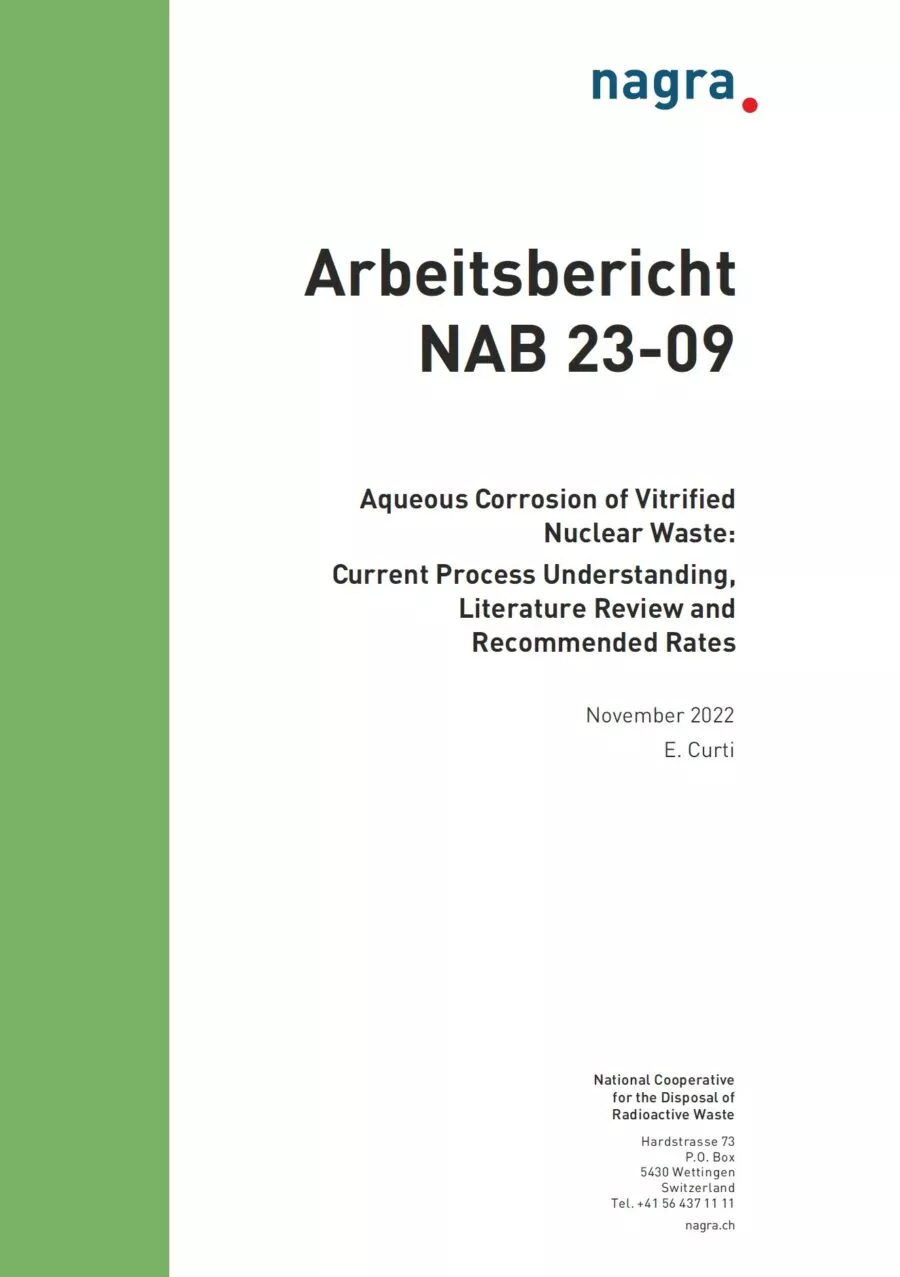
Arbeitsbericht NAB 23-09
Aqueous Corrosion of Vitrified Nuclear Waste: Current Process Understanding, Literature Review and Recommended Rates
Vitrified high-level radioactive waste in Switzerland
In the early stage of the Swiss disposal program, reprocessing and vitrification of all spent nuclear fuel was the option chosen for the disposal of high-level radioactive waste in a deep geological repository. To this aim, vitrified HLW was reprocessed in France and the UK. The vitrified reprocessed waste was then returned to Switzerland and is currently stored in the ZWILAG interim storage facility in Würenlingen. The vitrified waste packages consist of stainless steel coquilles containing solidified borosilicate glass. The contractors provided distinct specifications, resulting in two reference borosilicate glass compositions and inventories. In 2006, the Swiss federal government enforced a reprocessing moratorium. From that date on, reprocessing of waste arising from Swiss reactors was dismissed and Nagra had to pursue a strategy involving, in addition to vitrified waste, the direct disposal of untreated spent fuel. Consequently, both types of high-level wastes will have to be disposed of in the planned Swiss repository. This implies that for the safety case for a geological repository, robust scientific knowledge to derive glass dissolution rates for the consequence analyses of waste to be disposed of in the Swiss deep geological repository is required. In the scope of this report, results from various international study is reviewed and the corresponding glass dissolution rates of relevance for the Swiss repository derived.
